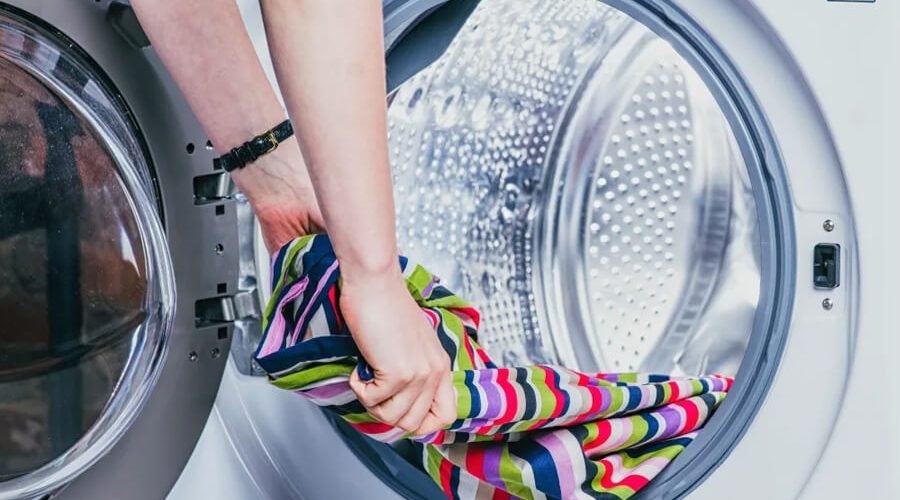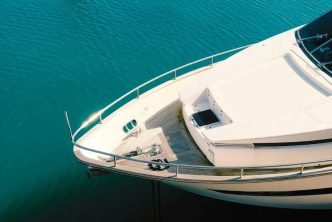Washing machines are a great necessity in most households, especially in larger households where laundry tends to pile up pretty fast. When looking to buy a washer for your home, one of the things to look out for is how the machine is loaded. We have two types of loading options: the top loader and the front loader. In this article, we will be focusing on the front-load washer.
Front-load washing machines have gained popularity over the years for their efficiency over top-load washers. Although it costs more than the top-load ones, more people find it to be worth the investment. This article will help you to understand the features of this front-load washing machine and guide you on how to choose the best one for your needs.
Table of Contents
Front Load Washing Machines: What exactly are they?
Front-load washing machines are washers that have their doors on the front and load from the front, unlike top-load washers that have their doors on the top and load from the top. In front-load washers, the door opens to the side, similar to the doors in residential apartments. This feature makes them more convenient and easier to use for people who use a wheelchair, people who have difficulty standing and need to sit more often, as well as people with small statues.
Components of a Front-Load Washing Machine
A front-load washer consists of mechanical and electrical components. Compared to a top-load washer, the components of a front-load washer are quite simpler. It generally consists of a door, motor, drum, bellows systems, inner basket, tub, and drainage system. There are no gears, clutch, or impellers as found in top-load washers.
The motor in a front-load washer is connected to the drum through a pulley belt and wheel. The bellows system of the washer (usually rubber) is flexible and helps to keep the clothes and the water inside the drum during wash cycles. It is important to keep the bellow system in top condition to prevent small items like socks from slipping between the tub and the inner basket, which may result in it obstructing the rotational movement of the inner basket or clogging the drainage. Also, because the bellows system is flexible and has many folds that can trap in water, it can easily develop odors, mold, or mildew. So, regular cleaning and maintenance are required.
The doors in a front-load washer are designed in a way to prevent water leaks from the machine. This makes it difficult to add clothes to the washer midway through the wash cycle. However, newer models come with windows that let you do so. Also, the doors have glass see-through features that let you see the clothing as they are spun in the washer, making it easier for users to track the wash cycle’s progress.
The electrical components
While the mechanical components are quite simple, the electrical control components are not. More recent models do not have the simple dial control for selecting the number of wash cycles according to the load size and soil level as older models do, rather, a minicomputer components control it. The minicomputer components are built such that if one component fails, the entire unit must be replaced.
Generally, most faults with front-load washers can be fixed by handy users, just like clearing a clogged drain or water pipe. However, using a repair manual can guide you on how to fix faults with your washer.
How Does a Front Load Washing Machine Work?
The working principle of a front-load washer is quite simpler than the top-load washer. It uses the rotation of the tub and gravity to work the clothes through the water. This is similar to the tumbling rotation found in drying machines. The side paddles inside the drum of the washer lift the clothes and move them in and out of the water, providing a mechanical action that is similar to manual scrubbing when washing clothes with hands. This makes it more effective for removing dirt from fabrics.
Front-load washers’ uses less water than top-load washers. That is because the mechanical wash action in front-load washers doesn’t require the fabrics to be surrounded by water all the time. Using less wash water means using less detergent to avoid creating soap suds that may leave residues on clothes.
Features of a Front Load Washing Machine
- They clean more efficiently than top-load washers
Front-load washers are more effective in removing dirt from clothing than top-load washers due to their more effective wash motion. The effectiveness in cleaning is often determined by four factors which include the duration of the wash cycle, a chemical action (the detergent used), thermal action (temperature of the water), as well as mechanical action of the washer (the movement of the washer).
A combination of the right detergent, an ideal water temperature, and an appropriate wash timing in a washer that has the best mechanical action would result in cleaner clothes. Considering these factors, front-load washers do the best. Their tumbling motion takes advantage of gravity by knocking the fabrics against each other; the fabrics, in turn, scrub themselves against the features of the drum and the abrasive elements in the detergent. This produces more energy to strip dirt off clothes than the swirling motion in top-load washers.
- They are more efficient in saving water
Front-load washers’ use less water than top-load washers— both older models of top-loaders with the agitator design and the newer high-efficiency models. When compared to a high-efficiency top-loader, front-load washers use about 5 gallons less water for a single wash cycle. Based on estimates for average use in a year, they may use up to 2,000 gallons less water—that could be the size of a medium-sized septic tank.
Front-load washers are more water-efficient because the tumbling motion drags the fabric through the water-detergent solution. It doesn’t necessarily require the fabric to be surrounded by water all the time since it uses a mechanical action to scrub the clothes. Whereas top-load washers require fabrics to be surrounded by water all the time. Hence, it uses a deeper pool to ensure that the clothes are completely immersed in water during the wash cycle.
- It Has A Larger Loading Capacity And Runs Fewer Wash Cycles
Front-load washers can carry a large load capacity depending on their size. That means you can fit more fabrics into them per wash cycle than you can in top-load washers. This makes them ideal for larger families and commercial laundry service providers that may tend to do laundry more. Also, the large load capacity feature means that you would run fewer wash cycles and do laundry less often generally.
- It produces less noise during the spin cycle
Most front-load washers have a vibration control feature that stabilizes the internal drum during wash cycles so that it doesn’t rattle your floors while in use. Hence, it produces less significant noise than the top-load ones, although the last spin can produce more noise. However, you can use your front-load washer during bedtime without worrying about being woken up by the noise. They are designed to function anywhere in the home, particularly in places that may cause your machine to rattle.
- More advanced features
Recent models of front-load washers come with additional luxury features such as a self-cleaning cycle, steam setting, reversible washer door, etc. However, washers with these features cost more than washers without them.
Benefits of a Front Load Washing Machine
- They’re energy efficient.
Front-load washers usually make use of horizontal drums. Horizontal drums have a reputation for spinning faster than vertical drums; as a result, they drain more water out of your clothes. With less water in your clothes, it means you would have less drying time. This is credibly important because dryers can be highly energy intensive. That is, they draw more power and may increase your utility bill more.
- They’re eco-friendly.
Because front-load washers are more energy efficient than top-load washers, they’re better for the environment. They also reduce your home’s carbon footprint since it uses less power and water.
- They can save money in the long run.
While front-load washers have a higher cost price than top-load ones, in the long run, they can help you save money. First, it uses less water and power, cutting costs on your utility bill. Also, the higher load capacity means fewer wash cycles and fewer laundry hours generally, which in turn means fewer resources to be used.
- They’re good for large loads.
As earlier said, front-load washers have a large load capacity, so it’s easier to fit more clothes in them. This would save you time during wash hours, especially if you have other things that demand your time.
- Clothes come out cleaner
With front-load washers, you do not have to worry about stains being retained on your clothing since they clean more effectively than top-load ones.
- They are gentler on clothes
Unlike top-load washers with agitators that can pull on clothes, the washing mechanism in front-load washers are gentler on clothes and can cause no damage to your clothing.
- They’re good for small spaces.
Front-load washers can be stacked on top of dryers. This can help you to save space in your home, especially if you already live in a home with limited space.
- They are reliable
Although front-load washers require frequent care and maintenance, they do not break down easily. Most faults with them are often minor and can be fixed by the user.
Choosing the Best Front Load Washing Machine for Your Needs
When choosing a washer to buy, here are some things to consider to make sure you make the right choice.
- Wash settings
Most front-load washers are designed to be fully automatic. Fully automatic washers can be customized to various settings to suit the fabric you intend to wash, such as wool wash or delicate wash. For example, if you have a newborn, toddler, or more delicate fabric clothing, you may be looking out for washers that have delicate wash features. So, before choosing a washer, check to see the different wash settings that are available on the washer.
- Spin cycle
The spin cycle of a washer is another important factor you should consider. The spin cycle feature is used for drying clothes, and the number of revolutions per minute calculates it. The higher the revolution, the faster it can dry your clothes. Different kinds of fabric require different spin cycles. For instance, a spin cycle of 300-500 rpm is recommended for delicate fabrics, while tougher fabrics can be spun up to 1000 rpm.
- Load Capacity
Depending on the size of the washer you choose to go for load capacity differs according to the size of the washer. If you have a large family or you need a washer for commercial purposes, you will need a machine with a large load capacity as opposed to people with smaller families.
- Material of the drum
The drum material in front-load washers can be made of either steel, plastic, or porcelain enamel. While steel is the most durable, it is also the most expensive. Other materials are cheaper than steel but also less durable than steel.
- Temperature control
Some washers have a feature that allows you to regulate the temperature of your wash water. If you would prefer to wash with warm water, you may consider a washer with this feature.
- Does it have pre-soak
If you have kids, especially toddlers, who tend to mess up their clothing, getting a washer with a pre-soak feature would come in handy for removing stains.
When choosing a washer, most people often only consider their budget first. While it’s important to spend within your means, it is also important to consider the efficiency and durability of whichever appliance you choose to buy. Most importantly, you should check if the appliance would serve the purpose you intend it to. Front-load washers are highly efficient for both families and businesses that are looking into investing in a new washer; considering the factors listed in this article would help you make the right choice for you.





